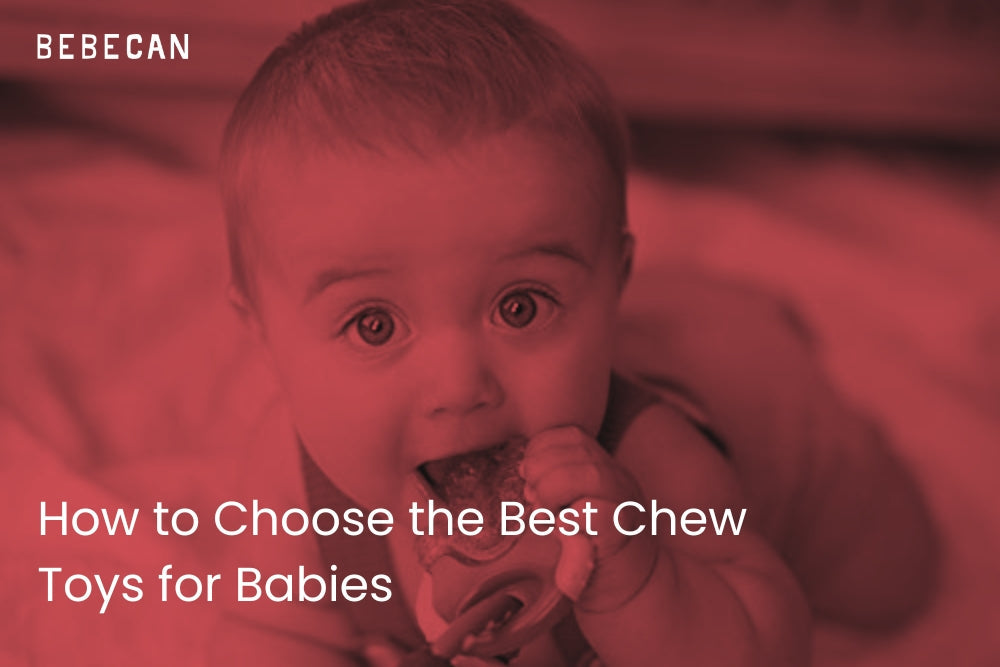Chew toys play a crucial role in baby development by serving beyond entertainment since they support growth and provide comfort while allowing exploration. How can parents select the best baby chew toys from the numerous options available? This guide will thoroughly explain all the necessary information to help you make a well-informed choice. Our selection ensures complete coverage for safety features and fun designs.
Why Chew Toys Are a Must-Have for Babies:
Chew toys form an essential part of every baby's toy collection. Every baby’s toy collection includes chew toys as fundamental pieces for several important reasons. Here’s why they’re so important.
Teething Relief: Between 4 to 6 months babies begin teething which makes chew toys a secure option for soothing their tender gums.
Sensory Development: Textured toys enable infants to explore various shapes and colors while stimulating their sensory development
Motor Skills: When babies hold and chew toys they improve their hand-eye coordination along with their fine motor abilities.
Safe Exploration: Babies naturally put things in their mouths. These toys offer babies a hygienic and secure method to fulfill their natural chewing behavior.
Key Features to Look for in Chew Toys for Babies:
Not all teething toys are created equal. When choosing the best teething toys for babies make sure to consider these essential factors.
Safety First:
Non-Toxic Materials: Select teething toys that feature BPA-free, food-grade silicone or natural rubber to ensure safety for baby teethers. Avoid toys with harmful chemicals or dyes.
Choking Hazard-Free: To avoid choking risks select toys that are appropriately sized and lack small parts that could detach.
Easy to Clean: To maintain proper hygiene select teething toys that can be cleaned either in the dishwasher or that offer easy sanitization.
Texture and Design:
Varied Textures: Select toys that incorporate bumps, ridges, or nubs to effectively massage sore gums.
Ergonomic Shape: Select toys with shapes that tiny hands can easily grasp and control.
Durability:
High-Quality Construction: Make sure the toy is durable and won't break easily from repeated biting.
Age-Appropriate: Refer to the manufacturer’s suggested age range to determine if the toy matches your baby’s developmental needs.
Fun and Engaging:
Bright Colors: Your little one will be drawn to and maintained by vibrant colors.
Interactive Features: For extra enjoyment, some teething toys include squeakers, rattles, or even teething gels.
Top Picks:
Our top picks for chew toys that meet all requirements for fun, safety, and durability are as follows:
Silicone Teething Rings: The soft and flexible texture combined with its easy cleaning properties makes these toys ideal for babies' hands and gums.
Natural Wooden Teethers: These toys combine eco-friendly wood with a natural untreated finish to offer a safe chemical-free choice.
Water-Filled Teethers: Refrigerating these teethers provides additional soothing relief for teething babies.
Multi-Textured Teethers: crafted with multiple textures to provide your infant with comfort and entertainment.
Tips for Using Teething Toys Safely:
Inspect Regularly: Examine toys for wear and tear, and replace any that are broken right away.
Clean Frequently: To prevent bacterial growth you should clean chew sticks for babies after every use.
Supervise Playtime: Never take your eyes off your baby when they play with teething toys. When you get a moment to yourself, you might find yourself looking into the various streaming services available for some entertainment.
Common Mistakes to Avoid When Choosing Chew Toys:
Ignoring Safety Standards: Always look for certifications, and stay away from toys made of dangerous materials.
Choosing the Wrong Size: Make sure the toy is suitable for the age and developmental stage of your child.
Overlooking Cleaning Instructions: To preserve good hygiene, Pick the toys that are simple to clean.
Conclusion:
It doesn't have to be difficult to choose the best teether toys for babies. You can pick the ideal toy to promote your baby's comfort and growth by putting safety, durability, and enjoyment first. Looking for a unique option? Consider a teether remote or teether remote control for added engagement!
FAQs:
Which materials are the safest for chew toys for babies?
Natural rubber, organic wood, and silicone free of BPA are the safest materials. Your baby's safety while teething is guaranteed by the non-toxic, long-lasting, and chemical-free nature of these materials.
How can I maintain germ-free teething toys?
Use a baby-safe disinfectant or wash teething toys frequently with warm, soapy water to preserve hygiene.
When should I start giving my infant teething toys?
Teething toys should be introduced to babies between the ages of 4 and 6 months, as this is when they usually begin to teether.
Are toys preferable to gels for teething?
Of course, teething toys are a safer option than gels that might include benzocaine or other substances that are not advised for young children. Natural relief is offered by a well-made teething toy without the possibility of chemical ingestion.
What qualities ought to be present in a teething toy?
The best teething toys feature calming qualities like cooling gel or soft silicone, varied textures, and designs that are easy to handle. Selecting a toy that keeps your baby busy and eases the pain of teething guarantees both entertainment and safety.

